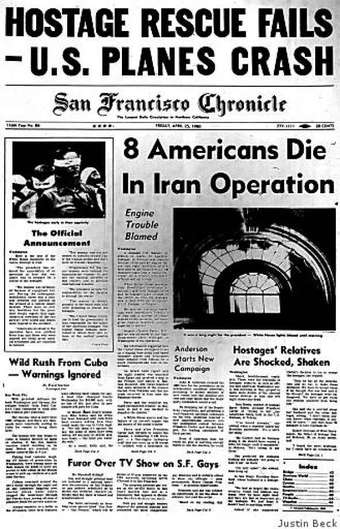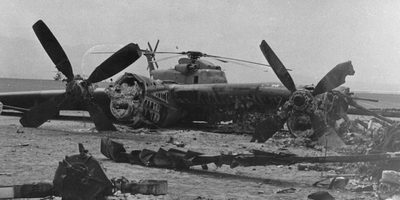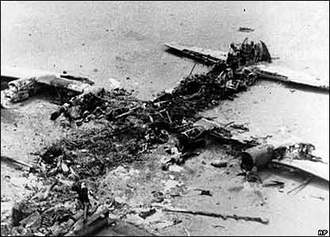"Members of the 8th Special Operations Squadron stand for a group photo in front of an MC-130E Combat Talon I prior to setting out
for Operation Eagle Claw on April 24, 1980", Moody Air Force Base
for Operation Eagle Claw on April 24, 1980", Moody Air Force Base
FAILED MILITARY INTERVENTION
Discouraged by many unsuccessful attempts at compromise, the U.S. abandoned diplomatic negotiation
and launched a disastrous military rescue mission.
and launched a disastrous military rescue mission.
|
The morning of April 11, 1980, Carter began considering military intervention. After months of failed negotiations, the military rescue mission planned since November 1979, Operation Eagle Claw, was to be executed on April 24, 1980.
It ended in disaster. Eight Americans died, five were injured and no hostages were rescued. April 25, 1980, The Woodstock Whisperer
Everybody asks me, 'What would you do [differently]?' Well, I would [have sent] one more helicopter because if I had one more helicopter, we could’ve brought out not only the fifty-two hostages but also brought out the rescue team. |
The plan was for eight RH-53D helicopters to be launched off the aircraft carrier Nimitz, stationed in the Arabian sea, and fly 600 miles to a landing field within Iran, designated as Desert One, near a town called Tabas….At the designated site, the helicopters were to meet with six C-130 transport planes that were to fly in from Masirah Island, off the coast of Oman. Three C-130s carried the assault force of about 120 men; the other three carried fuel for the helicopters. Carter's televised addressed to the nation on the failed rescue attempt,
April 25, 1980, Miller Center |
In the months after Operation Eagle Claw, the U.S. held off on drastic compromise attempts.
The failure of the rescue mission had cooled the political climate. The voices calling so insistently for the government to 'do something' fell silent....President Carter returned to active campaigning for the first time in many months, and there was a widespread, if tacit, recognition that nothing further could be done for the moment. |
|


